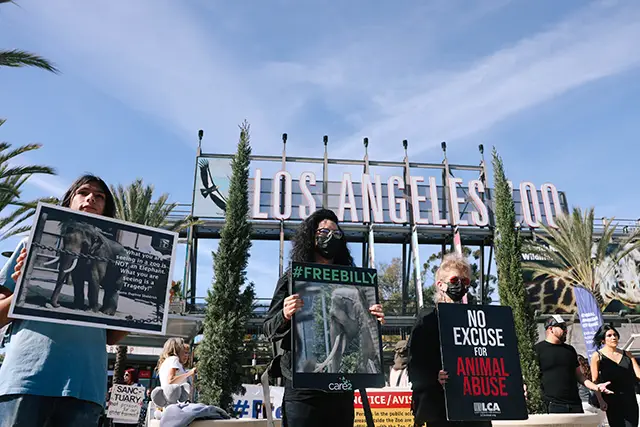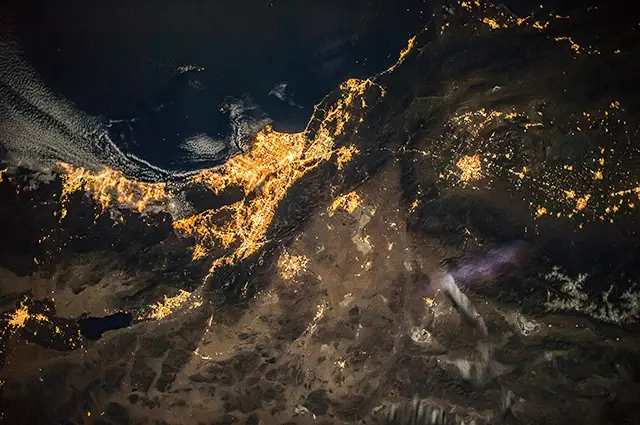
Good morning. It’s Thursday, May 22.
- Offshore wind moves ahead despite President Trump.
- Stanford University ignores student hunger strike.
- And OpenAI looks to create an everyday AI gadget.
Statewide
1.
While President Trump has made clear his antipathy for wind energy, California has good reason to be optimistic about its offshore plans: construction is conveniently at least a presidential term away. That means developers can quietly move through preparations for turbine farms off San Luis Obispo and Humboldt counties, then hit the ground running under the next president. “That’s the opportunity that California has got over the next, two, three or four years, without involving Washington,” said Tony Appleton, of the energy firm Burns & McDonnell. “There’s so much to do locally.” Politico
2.

A California Democratic lawmaker was cited Monday on suspicion of driving under the influence of drugs after a crash in Sacramento, police said on Wednesday. State Sen. Sabrina Cervantes, 37, of Riverside, forcefully denied that she was intoxicated, accusing the police of mistreating her in an ordeal that was “deeply distressing.” CalMatters reviewed footage that it said appeared to show Cervantes was not at fault in the crash. Instead, another vehicle rolled through a stop sign and hit her car. CalMatters | A.P.
3.
At the end of 2019, before the pandemic disrupted the economy, Californians needed to have a minimum annual income of about $120,000 to afford the state’s median-priced home, putting home ownership out of reach for most. Since then, that figure has nearly doubled. According to an analysis by the California Association of Realtors, home buyers now need to earn at least $218,000 a year to afford a typical home. Rising mortgage rates are partly to blame. But so are prices: the median selling price has surged 40% to $846,830 since 2019. Mercury News
4.

Anna’s hummingbirds, California’s most common hummingbird, have developed longer beaks in response to the profusion of backyard bird feeders across the state, a study found. Researchers first mapped the distribution of bird feeders, then analyzed museum specimens to quantify the changes to their beaks over time. The differences emerged strikingly fast, in a matter of only about 10 generations, they found. Roslyn Dakin, an animal behaviorist not involved in the study, said it demonstrated “evolution in action.” Science Magazine
Northern California
5.
OpenAI’s Sam Altman announced Wednesday that he was partnering with Jony Ive, who designed the iPhone, to build an everyday artificial intelligence gadget. What the new device will look like, they didn’t say. But they dropped hints: it will be pocket-sized; it won’t be a phone or glasses; and it will lack a screen. Past attempts at AI wearables have so far flopped. But if any pair has a shot at creating a legitimately useful device, said the tech writer Matteo Wong, it’s Altman and Ive. The Atlantic | Wall Street Journal | N.Y. Times
6.

Stanford is reacting with silence to a student hunger strike that has now stretched well into its second week. The protest action began on May 12, when more than a dozen students, faculty, and staff members pledged to stop eating until the university divests from companies they say are supporting Israel’s war in Gaza. Stanford has said it has no intention to negotiate. “The university seems to think that they can put their fingers in their ears and ignore us, but we’re here to show them that they can’t do that,” said Owen Martin, a freshman striker. KQED
7.
Eight days after Gov. Gavin Newsom urged California cities to ban homeless encampments, Eureka on Tuesday struck down an ordinance that would have increased the penalty for unlawful camping from a citation to a misdemeanor. Eureka and the surrounding county of Humboldt have had among the highest per capita rates of homelessness in California. Even so, the proposed ordinance drew fierce opposition, with protesters hoisting signs outside City Hall that read “Trust not tickets,” “Hobo lives matter,” and “Housing not handcuffs.” Lost Coast Outpost | Times-Standard
8.

There’s a spa in Sonoma County that buries guests up to their necks in compost. Osmosis Day Spa Sanctuary is reputed to be the only spa in North America to consistently offer the Japanese treatment known as a “cedar enzyme bath.” Owner Michael Stusser explains: “I like to say that what’s going on in there is a fundamental impulse in biology. All these microorganisms get a chance to talk to each other. They all have infinite wisdom. They all communicate. So there’s this energy going on. There’s a whole flow.” L.A. Times
Southern California
9.

When the Los Angeles Zoo announced plans in April to relocate two beloved elephants to another zoo in Tulsa, it drew passionate protests, a lawsuit, and a plea from the pop icon Cher on the pachyderms’ behalf. The protesters wanted the animals, Billy and Tina, to go instead to an elephant sanctuary, where they could roam more freely. It was all for naught. On Wednesday, the zoo confirmed that the elephants had been quietly driven to Tulsa this week. L.A. Times | A.P.
10.
Eric Topol, a cardiologist and founder of the Scripps Research Translational Institute in La Jolla, set out 17 years ago to find out why some people age better than others. He was surprised to find that DNA did not seem to explain healthier aging. In Topol’s new book, “Super Agers: An Evidence-based Approach to Longevity,” Topol lays out the true keys to longevity. One takeaway: strength training is more important than many might think. Washington Post
11.
“It takes a lot of manpower to take care of 500 roses, or even 200 roses. I tell people, 200 roses are going to take eight hours a week that are concentrated on nothing else but the roses.”
The Los Angeles Times profiled Dan Bifano, a master rosarian who has created gardens for clients including Oprah, Barbra Streisand, Tom Ford, and other people so private he can’t name them because of nondisclosure agreements.
12.

The author John McPhee famously portrayed Los Angeles as a place in conflict with the wild — “overmatched on one side by the Pacific Ocean and on the other by very high mountains.” The battle defines the very shape of the city. Rather than spreading out in the circular pattern of many other big cities, the communities of Los Angeles move through irregular corridors, pushing themselves hard against the mountains, wrote McPhee. Of the San Gabriel range, he continued: “Rising straight up out of the megalopolis, they stand ten thousand feet above the nearby sea, and they are not kidding with this city.”
The peculiar urban contours that result become vivid at night, when the mountains go dark. The view from space reveals a comprehensive settlement that appears like spilled lava, stretching 200 miles from San Diego to Santa Barbara. NASA published a fantastic high-resolution satellite image of Southern California at night. See it here, and the same image with labels here.
The California Sun surveys more than 100 news sites daily, then sends you a tightly crafted email with only the most informative and delightful bits.
Sign up here to get four weeks free — no credit card needed.
The California Sun, PO Box 6868, Los Osos, CA 93412
Wake up to must-read news from around the Golden State delivered to your inbox each morning.
